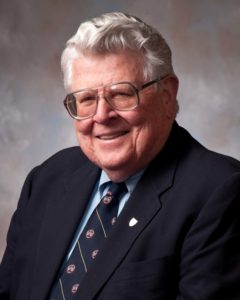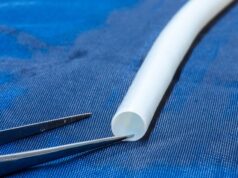
During a storied career, Norman M. Rich, MD, carved out a reputation as a pioneering vascular surgeon—drawing distinction for the creation of the Vietnam Vascular Registry database of vascular trauma injuries.
As a major during the Vietnam War, he was an emerging young surgeon who performed the role of chief of surgery in the Mobile Army Surgical Hospital (MASH) unit, where his emphasis on the need for arterial and venous repairs would help save screeds of lives and limbs.
It’s perhaps no wonder then that the university department of surgery Rich founded would form a new named chair in his honor. So it was that the Uniformed Services University (USU) created the Norman M. Rich chair in surgery, a title assumed for the first time by current department chair Navy Capt. Eric Elster, MD.
USU described Rich as a significant contributor to the institution itself, military medicine and surgery throughout the more than half a century he operated as a vascular surgeon.
During the hostilities in Vietnam, he would refine vascular surgical techniques, in particular for arteriovenous injuries incurred at the extremity. Rich’s injury database contained more than 7,500 people, a development he ranked as one of his proudest achievements in an interview with Vascular Specialist published in November 2018.
“He is exceptionally worthy of this honor for his tireless commitment and dedication to the School of Medicine and the Uniformed Services University,” said Arthur Kellermann, MD, dean of USU’s School of Medicine.
For a read on what drew Rich to vascular surgery in the first instance, we must delve back in time to the horrors of World War I. It was through the words of Otto Utzinger, MD, the doctor who had delivered him, that as a boy he heard about the horrors of amputations carried out during the Great War. The seed was planted.
Others from whom Rich drew inspiration include surgical titans like Michael DeBakey, MD, Carl Hughes, MD, Frank Spencer, MD, and Emile Holman, MD. His Vietnam registry found inspiration from Hughes, who had himself cataloged the vascular cases he treated during the Korean War. The registry saw Rich document the details of injuries as closely as possible, and then obtain and add long-term follow-up to each entry to establish whether procedures had worked.
It has had a lasting impact on the practice of vascular trauma, though Rich downplayed his overall role, quoted as saying he was “merely a scribe for 600,000 young American physicians who served during an eight-year period in Vietnam.”
Elsewhere, Rich was the first vascular surgery fellow at Walter Reed General Hospital in Washington, D.C. He took on his role in USU’s department of surgery in 1977, stepping down in 2002. He was responsible for the first edition of “Rich’s Vascular Trauma,” written with Spencer, and a further two subsequent editions of the textbook. He has also served on the editorial board of the Journal of Vascular Surgery.
“From this point forward, every surgeon who is given the honor of leading USU’s department of surgery and concurrently holding the Norman M. Rich chair of surgery at USU will have a direct connection to one of academic surgery’s most influential leaders in the 20th century and well into the 21st,” added Kellermann. “On behalf of the Uniformed Services University and ‘America’s Medical School,’ I offer heartfelt thanks to Dr. Norman M. Rich for a lifetime of service to USU and our nation, and congratulations to both Dr. Rich and Capt. Elster on this distinct honor.”












